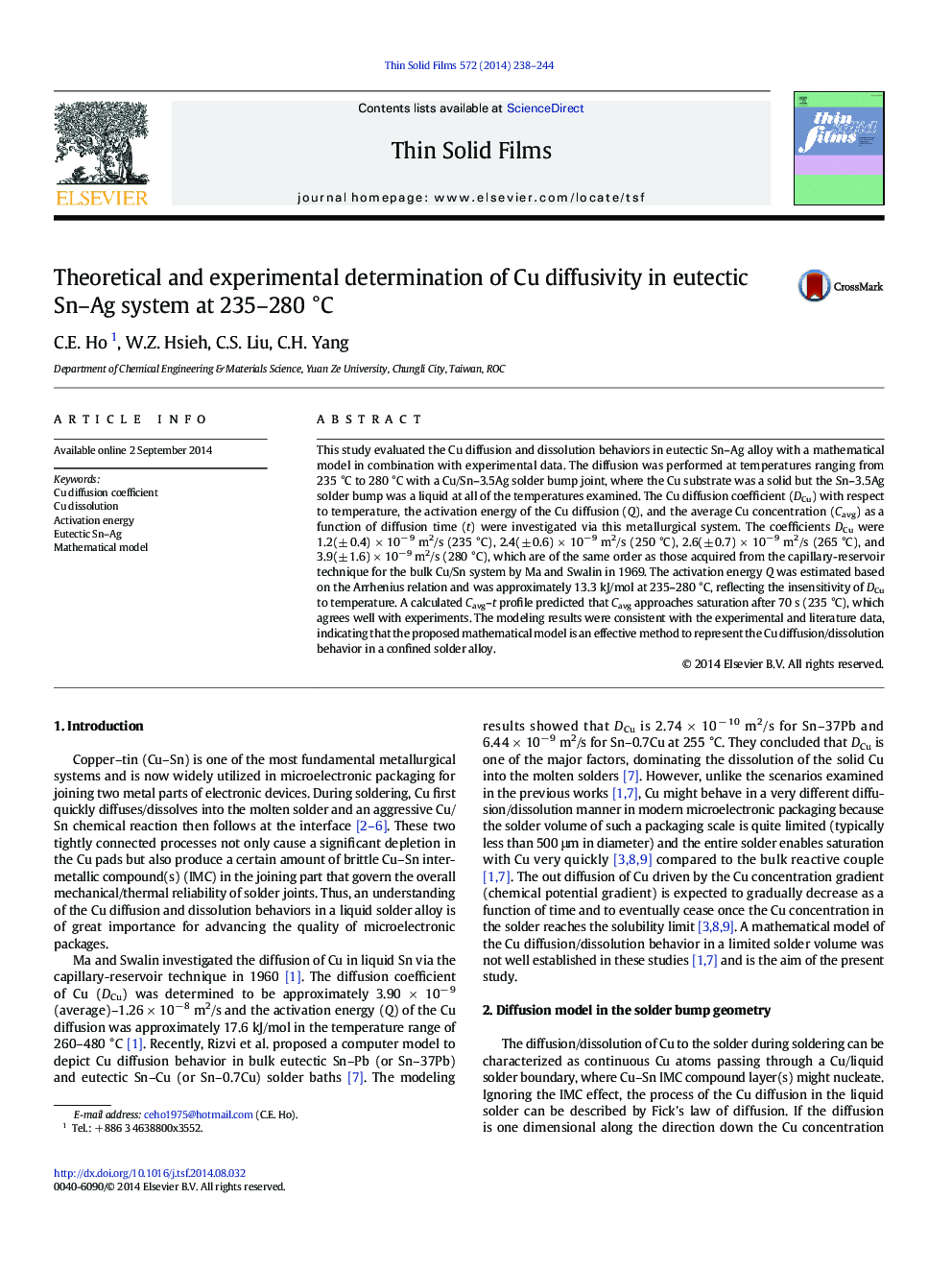| کد مقاله | کد نشریه | سال انتشار | مقاله انگلیسی | نسخه تمام متن |
|---|---|---|---|---|
| 1665031 | 1518033 | 2014 | 7 صفحه PDF | دانلود رایگان |

• Cu diffusion and dissolution behaviors in liquid eutectic Sn–Ag bump
• A new mathematical model predicted Cu diffusion coefficients at 235–280 °C.
• Activation energy of the Cu diffusion was ~ 13.3 kJ/mol at 235–280 °C.
• Eutectic Sn–Ag enabled to saturate with Cu in one typical reflow.
• Cu saturation slowed Cu dissolution and induced a rapid growth of Cu6Sn5 IMC.
This study evaluated the Cu diffusion and dissolution behaviors in eutectic Sn–Ag alloy with a mathematical model in combination with experimental data. The diffusion was performed at temperatures ranging from 235 °C to 280 °C with a Cu/Sn–3.5Ag solder bump joint, where the Cu substrate was a solid but the Sn–3.5Ag solder bump was a liquid at all of the temperatures examined. The Cu diffusion coefficient (DCu) with respect to temperature, the activation energy of the Cu diffusion (Q), and the average Cu concentration (Cavg) as a function of diffusion time (t) were investigated via this metallurgical system. The coefficients DCu were 1.2(± 0.4) × 10− 9 m2/s (235 °C), 2.4(± 0.6) × 10− 9 m2/s (250 °C), 2.6(± 0.7) × 10− 9 m2/s (265 °C), and 3.9(± 1.6) × 10− 9 m2/s (280 °C), which are of the same order as those acquired from the capillary-reservoir technique for the bulk Cu/Sn system by Ma and Swalin in 1969. The activation energy Q was estimated based on the Arrhenius relation and was approximately 13.3 kJ/mol at 235–280 °C, reflecting the insensitivity of DCu to temperature. A calculated Cavg–t profile predicted that Cavg approaches saturation after 70 s (235 °C), which agrees well with experiments. The modeling results were consistent with the experimental and literature data, indicating that the proposed mathematical model is an effective method to represent the Cu diffusion/dissolution behavior in a confined solder alloy.
Journal: Thin Solid Films - Volume 572, 1 December 2014, Pages 238–244